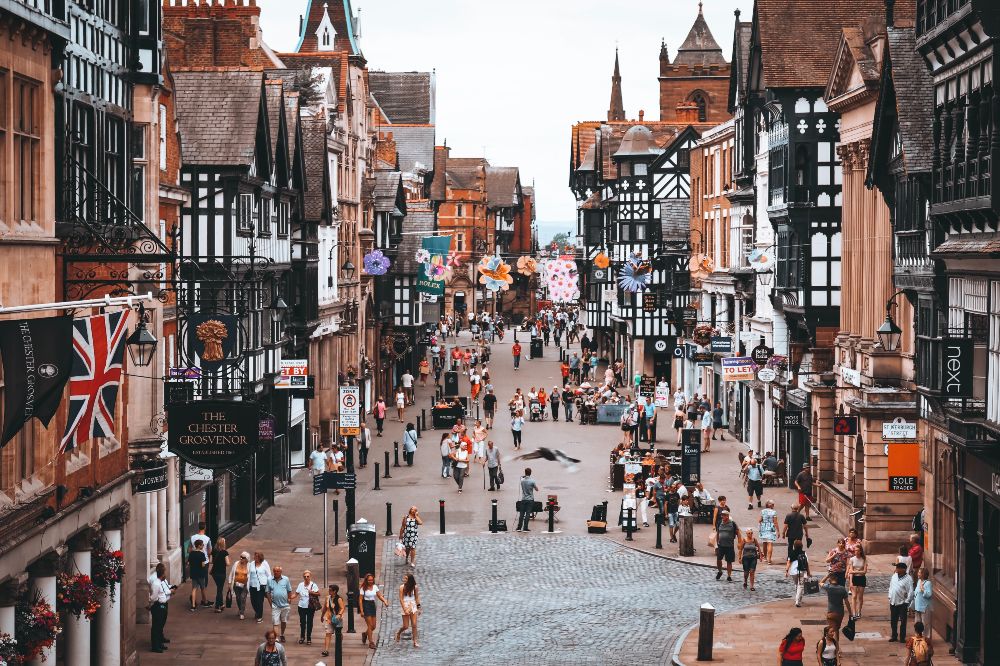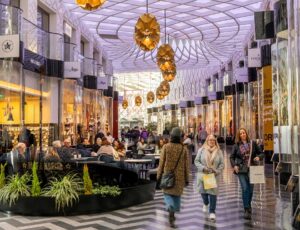
According to retail expert MRI Springboard, footfall rose by +0.7% across all UK retail destinations wholly driven by high streets, where footfall rose by +4.8% from the week before. This rise has been credited to the school summer holidays, with coastal towns – where many people are currently on holiday – also seeing a +2.3% increase.
In contrast, footfall across retail parks and shopping centres saw a significant decline, meaning the +0.7% rise in footfall was solely driven by high streets. Footfall in retail parks saw a -4.4% decrease while shopping centres saw a -2.8% decline. However, in comparison to the same week in 2022, the result was a favourable one, as footfall declined from the week before in all three key destination types last year.
The rise in high street footfall from the week before averaged +11.7% over Sunday, Monday, Wednesday and Saturday, and by +17.1% on those four days in coastal towns. On the remaining days, the week-on-week decline averaged just -2.9%, with a rise of +2.3% in coastal towns. In contrast, in retail parks footfall declined every day, with week-on-week drops ranging from -0.1% on Tuesday to -8.5% on Saturday. In shopping centres, the six days of week-on-week declines from Tuesday to Saturday ranged from -0.5% (Wednesday) to -6.5% (Thursday) with a drop of -4.2% on Saturday.
Across the UK, the rises in high street footfall ranged from +1.7% in Wales to +7.2% in the East.
In retail parks, drops in footfall ranged from -4.2% in Wales to -7.9% in the East Midlands. In shopping centres, they ranged from -2% in North & Yorkshire to -6.7% in Wales. Meanwhile, in Scotland, the rise in footfall in both retail parks and shopping centres was very modest (+0.9% in retail parks and +1.1% in shopping centres). Footfall last week was +4% higher than in 2022. The gap from 2019 also narrowed to -9.1% from -10.8% in the week before last.
Commenting is Diane Wehrle, Insights Director at MRI Springboard.
“With the school summer holiday in full swing, footfall across UK retail destinations improved only marginally last week from the week before. However, the overall result disguised significant differences in performance between the three key destination types, with a rise in footfall in high streets but declines in both shopping centres and retail parks. All of the rise in footfall last week was driven by high streets, whilst in shopping centres and retail parks footfall declined.
“High streets were undoubtedly supported by the school holiday, with a rise in footfall in coastal towns – where many people are currently on holiday – that was more than double the UK average for high streets. In historic towns too, the rise in footfall from last week was slightly greater than the UK average for high streets, whilst the uplift in footfall in city centres was below the UK high street average.
“Whilst there may have been an expectation of a more significant rise in footfall last week than the modest uplift that occurred, comparison with the same period last year reveals a favourable result. While activity in shopping centres and retail parks declined last week both this year and last year, in high streets footfall rose this year whilst it had declined week-on-week last year.
“The rise in high street footfall occurred across all UK geographies, whilst in retail parks and shopping centres there were week-on-week declines in all geographies apart from Scotland, where footfall rose marginally.”












